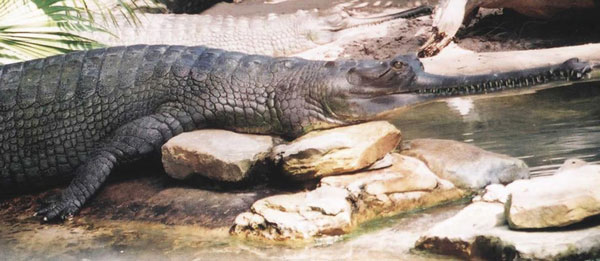Toxin suspected in mass gharial deaths.
Indian government officials and an international collaboration of researchers and laboratories continue the investigation into the deaths of at least 101 critically endangered gharial in the National Chambal River Sanctuary.

The team conducted necropsies (post-mortem examinations of dead animals) on several gharial and ruled out the possibility of any infection or parasite as the cause of death. All dead gharial were diagnosed with kidney damage and failure, significant gout within the body cavities and around internal organs (visceral gout), and gout within the joints (articular gout).
The dead gharial have appeared otherwise healthy and fat, indicating the problem is relatively recent. The kidney damage and failure was most likely caused by an unidentified toxicant, the team has determined based on microscopic changes in the kidneys of the dead gharial. As of late January, more than 90 gharials have died along a stretch of India’s Chambal River.
The river has the largest remaining gharial population, so these deaths represent a serious threat to the long-term survival of the species. Most estimates conclude less than 2,000 gharials are left in the wild. The gharial was uplisted to Critically Endangered on the World Conservation Union’s Red List of Threatened Species.
For further information or to contact the GCA, visit the GCA website www.gharials.org.
With information provided by Colin Stevenson, GCA European coordinator.



